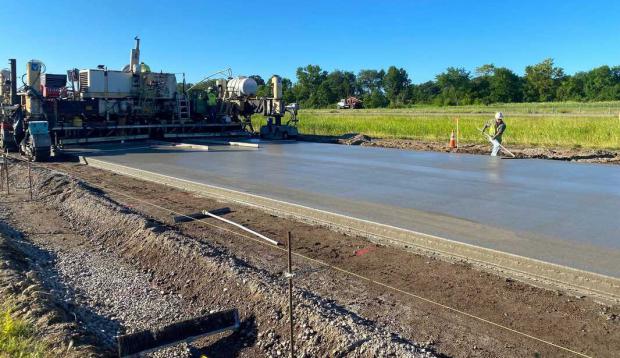
Breaking News
 "Kill Babies, Superman"? New CHILDREN'S Book Calls Abortion a "Superpower"
"Kill Babies, Superman"? New CHILDREN'S Book Calls Abortion a "Superpower"
 Gold Warning Issued as New Monetary System Takes Hold
Gold Warning Issued as New Monetary System Takes Hold
 This Is The Best Tool Set I've Ever Tested!
This Is The Best Tool Set I've Ever Tested!
 RFK JR, HHS, ALIGN WITH PARENTAL CONSENT
RFK JR, HHS, ALIGN WITH PARENTAL CONSENT
Top Tech News
 This tiny dev board is packed with features for ambitious makers
This tiny dev board is packed with features for ambitious makers
 Scientists Discover Gel to Regrow Tooth Enamel
Scientists Discover Gel to Regrow Tooth Enamel
 Vitamin C and Dandelion Root Killing Cancer Cells -- as Former CDC Director Calls for COVID-19...
Vitamin C and Dandelion Root Killing Cancer Cells -- as Former CDC Director Calls for COVID-19...
 Galactic Brain: US firm plans space-based data centers, power grid to challenge China
Galactic Brain: US firm plans space-based data centers, power grid to challenge China
 A microbial cleanup for glyphosate just earned a patent. Here's why that matters
A microbial cleanup for glyphosate just earned a patent. Here's why that matters
 Japan Breaks Internet Speed Record with 5 Million Times Faster Data Transfer
Japan Breaks Internet Speed Record with 5 Million Times Faster Data Transfer
 Advanced Propulsion Resources Part 1 of 2
Advanced Propulsion Resources Part 1 of 2
 PulsarFusion a forward-thinking UK aerospace company, is pushing the boundaries of space travel...
PulsarFusion a forward-thinking UK aerospace company, is pushing the boundaries of space travel...
 Dinky little laser box throws big-screen entertainment from inches away
Dinky little laser box throws big-screen entertainment from inches away
 'World's first' sodium-ion flashlight shines bright even at -40 ºF
'World's first' sodium-ion flashlight shines bright even at -40 ºF
New Low-Carbon Concrete Outperforms Today's Highway Material While Cutting Costs in Minnesota

Concrete and its most important ingredient, cement, is one of the most carbon-intensive industries on Earth because it's used so often in construction. It has virtually no parallels for the ease of use, versatility, and structural properties, but emits about 0.6 tons of carbon per 1 ton of cement mixture produced according to Imperial College London.
US firm Carbon Upcycling Technologies, in collaboration with the Minnesota Department of Transportation (MnDOT) has successfully completed a three-year study on the use of the company's low-carbon cement in highways.
The results highlight Carbon Upcycling's ability to be a drop-in solution for reducing carbon-intensive cement in concrete, while saving money and making stronger roads.
The work in the study was carried out by Sutter Engineering and sponsored by the National Road Research Alliance (NRRA). It rigorously tested 16 unique concrete mixtures in real-world conditions on an active Minnesota highway to identify options that could reduce the carbon footprint of infrastructure without sacrificing strength or durability.
Completed in early 2024, the study aimed to find materials that could significantly lower the carbon footprint of concrete paving without compromising durability. Carbon Upcycling's CO2-enhanced mix achieved a 12.5% reduction in cement content while matching the workability of traditional concrete, allowing seamless handling, placement, and setting times for construction crews.
"Infrastructure is the very foundation of a sustainable future, and at Carbon Upcycling we're committed to creating materials that support this vision while establishing a secure, stable North American supply chain," said Apoorv Sinha, CEO of Carbon Upcycling.
"Our collaboration with the Minnesota Department of Transportation highlights how Carbon Upcycling can transform captured emissions into local materials that strengthen our infrastructure. By focusing on resilience and sustainability, we're contributing to a vision where our essential structures are clean and built to last."



